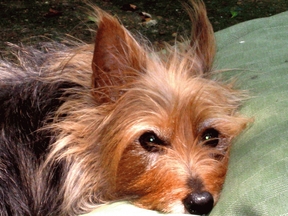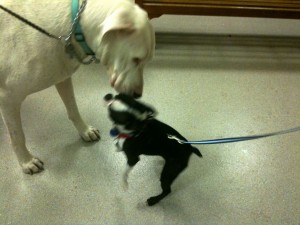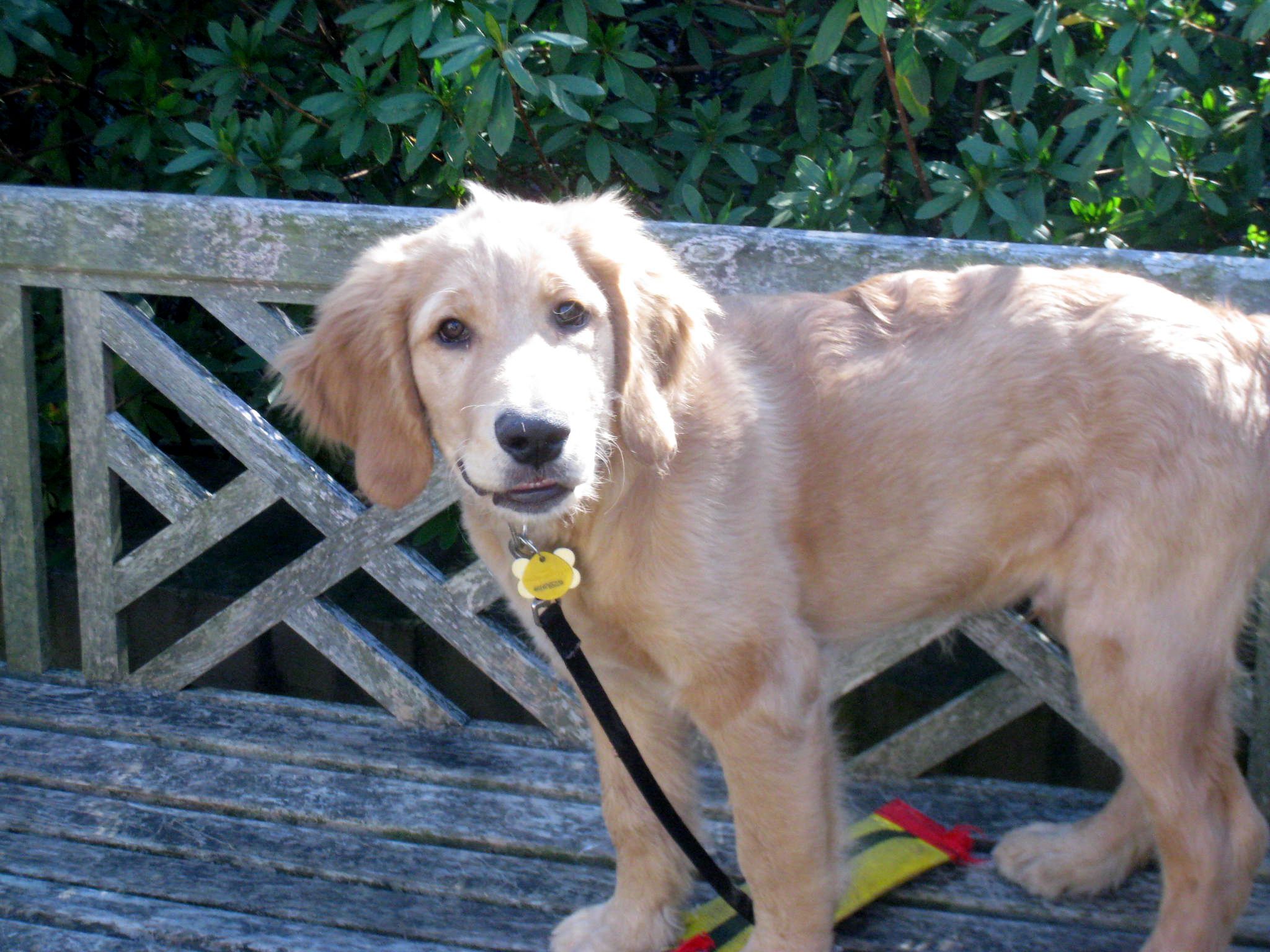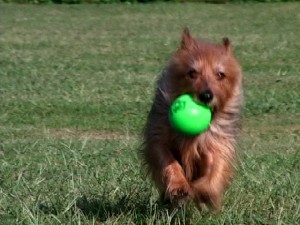
Go to Place is one of my favorite behaviors. I use it to keep Bentley, my AKC registered, Australian Terrier. from licking the dishes while I load the dishwasher, irritating my guests, pestering me during dinner, or any other times I want him to relax in one spot.
Before you begin training your dog, you’ll need to learn a bit about communication and motivation. Please visit the Dog Training Start Here Category. There you will learn about markers and rewards, two excellent topics for communicating and motivating! A prerequisite for “stay” is “Attention on Cue”. It doesn’t hurt if your dog already knows “Sit” too!
You can have more than one “place” for your dog. Bentley has 2 places in my 14X14 den! I have a crate pad placed on top of a ottoman, and he has a comfortable dog bed on the floor. I like to use a dog bed because it’s portable. I can place it in my car, on my back patio, in a hotel room or wherever my dog is welcome.
Here’s a good crate pad type of bed made of synthetic sheepskin. I like these because they are easy to wash and have a raised edge for the dog’s head. Hey, those guys like a pillow too!
Purchase an inexpensive bed, like this one, if your guy or girl is still a puppy.
The more expensive beds are for dogs that don’t treat the bed as a toy.
Before I teach any behavior, I always like to outline the steps necessary for success.
What are the individual behaviors that make up go-to-place? The dog must go to the place, then lie down and then stay. You could break it down into many smaller pieces.
For example, before the dog can go to the bed, he must first look towards it. Before he can lie on the bed when asked, he must know the command “down”. And, before he can stay on the bed for say, 15 minutes, he must be able to stay for 15 seconds.
There are many ways to teach go-to-place. Some require more thought than others. I have written a short description of how to teach your dog to go to place AND how to use Classical or Pavlovian Conditioning to condition your dog to like his or her place!
Go-To-Place
There are many ways to teach go-to-place. Some require more thought than others. I’ve found that luring is the easiest for most of my clients.
Feed the Birds
Before we start, I say, “Think about feeding pigeons in the park”. First you toss bird seed. Before long, pigeons find the food, land on that spot and start feeding. Then you toss more seed as they are feeding. Do this every day at noon.
After a few days, the sight of you approaching will attract the pigeons. They are already in place waiting for the food! Do the same with your dog and your dog’s bed.
Get your dog’s dinner out and instead of placing the bowl on the floor, place it next to you on the dinner table, coffee table or kitchen counter. Place the dog bed in a spot a few feet away. Toss a few pieces of dog food on the bed.
Do not speak to your dog during these steps.
While your dog is eating, toss a few more pieces to keep him busy looking for food. As soon as he finishes and starts to walk off the bed, toss more food on the bed.
After he eats all the food on the bed, your dog will come towards you. Before he reaches you, toss a few more pieces over his head and onto the bed. Say nothing.
Repeat this sequence a few times. Wait until he starts to walk towards you and toss a few pieces over his head, onto the bed.
Soon your dog will be on the bed waiting for the food to rain down around him!
Add the Cue
After your dog catches on, speak your “go-to-place” cue when your dog is walking towards you and before you toss any food. Some of the commands I like are “Your Spot” and “Cozy Mat”.
You may need to help your dog by walking towards the bed and pointing to it or touching it with your hand.
When your dog gets all four feet on the bed, mark the instant (with your reward marker) and then toss a food treat. Walk a few feet away. If your dog follows, give the cue and move towards the bed. Mark the instant he gets on the bed and then toss a few pieces of food.
Once he is going-to- place on cue, ask him to “down”. Toss a few pieces of food after he goes down. Over several trials, increase the periods of time in-between tosses of food.
Condition Go-To-Place
Chewing helps dogs relax. At this stage you can add a special chew treat into the routine. After your dog is on his bed, give him a long lasting, high value, unique, chew treat.
Here’s the best treat for conditioning GO-To-Place. This free range chew will not stink up your house, nor will it stain your carpet, like the ones you find at local pet supply stores. CAUTION, This chew has the potential to turn Fluffy into Cujo! Read about Food related aggression by clicking anywhere in this sentence.
By pairing a special chew treat with the bed, you are taking advantage of classical or Pavlovian conditioning. The bed will elicit the same physiological calming response as chewing.
If he gets up from the bed, say nothing, just take the special treat away.
The sequencing is important. The dog must be on the bed before receiving the unique chew treat. The instant he gets off the bed, remove the treat.
By following this sequence, you are teaching your dog that lying on the bed predicts the delivery of the chew treat, and leaving the bed predicts the loss of the chew treat.
At first, you’ll always give your dog the unique treat once he is on his bed. After several sessions, you won’t always give the special chew treat. Sometimes you will, other times you won’t.
The act of lying on the bed will elicit the same calming effect as the chew treat, even when he does not have the treat.
A common mistake is to give the dog the special chew treat when he is not on the bed.
In order to maintain the association, the unique chew treat should only be delivered when the dog is on the bed.
Happy Training
Alan J Turner
Companion Animal Behavior Counselor & Trainer
Private and Group dog training services in Memphis TN
http://howsbentley.com
 Forget about stopping naughty behaviors.:) Instead, spend a little time with your dog and teach him a behavior that is incompatible with jumping up on counters such as to Go-To-Place.
Forget about stopping naughty behaviors.:) Instead, spend a little time with your dog and teach him a behavior that is incompatible with jumping up on counters such as to Go-To-Place.



